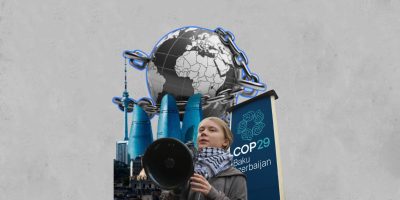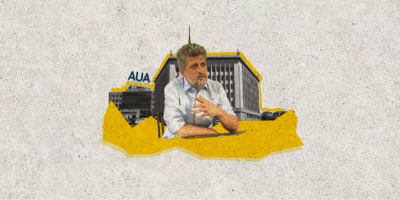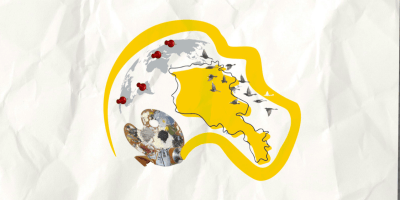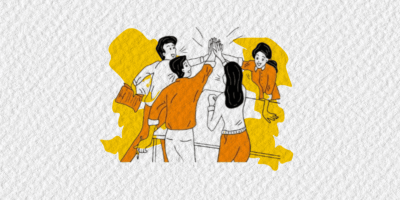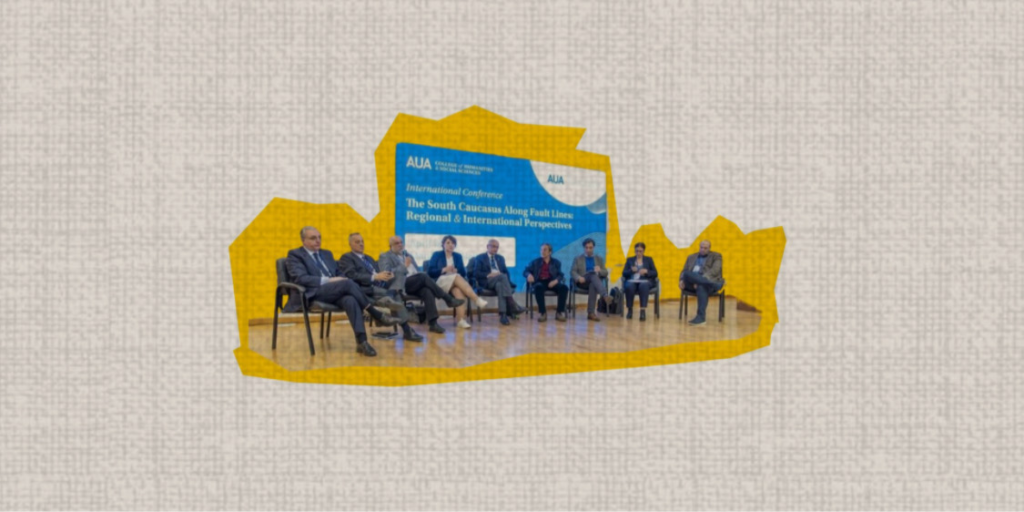
On April 18, AUA hosted an international conference on regional and international perspectives in the South Caucasus in collaboration with the Turpanjian Institute of Social Sciences. The topics that they discussed were the unresolved Armenian-Azerbaijani conflict, the ongoing peace treaty negotiations, and the possibility of a future war.
The conference was held at the Manoogian Hall, where nine speakers who were international relations analysts and former diplomats gathered to discuss the current state of the Caucasus region from local and international perspectives.
Conflicts and tensions have always been part of the South Caucasus region, as it includes countries with different religious and ethnolinguistic groups. Democratizing countries, such as Armenia and Georgia, are surrounded by authoritarian regimes, such as Azerbaijan, the Islamic Republic of Iran, the Russian Federation, and Turkey.
The scholars also emphasized how Russia is still a prominent figure in the region, despite being at war with Ukraine since 2022. The region is also an interest to India, China and the United States as they continue to strengthen their relations with the region.
In her opening speech, AUA Provost Dr. Alina Gharabegian highlighted the significance of the collaboration with Turpanjian Institute and AUA’s graduate programs that reflect AUA’s commitment to becoming a center for international affairs in the region.
She asserted that attending such conferences is a networking opportunity, as students are often just one conversation or handshake away from engaging with experts in their fields. “I hope the event inspired students to explore political topics more deeply and encouraged them to engage in meaningful civic participation, so that they might contribute to thoughtful societal change in the near future,” Dr. Gharabegian added.
Former Minister of Foreign Affairs of Armenia, Zohrab Mnatsakanyan, started the conference. He focused on the collective freedom and the preservation of Armenia’s identity. Zohrabyan added that collective freedom as a value is important to national security, and that it should be the number one priority of the country.
Dr. Mustafa Aydin, the president of the International Relations Council of Turkey, predicted “no war, no peace” between Armenia and Azerbaijan. He advised the audience to watch for a potential Russian comeback once the war with Ukraine comes to an end, as well as the growing Chinese interest in the region.
At the end of the first half of the conference, Former Indian Ambassador to the Republic of Armenia, Achal Malhotra, stated in his speech that the region is on India’s radar as the country looks for connectivity. He stated that there have been India-Armenia-Iran meetings to reinforce the relationship between the countries.
The second half of the conference concentrated on Russia’s role in the South Caucasus. The discussions highlighted Russia’s involvement in the second Nagorno-Karabakh war, the peacekeepers’ failed mission and its impact on Armenia’s near future.
The speakers concluded that Russia has been passive in supporting Armenia. Olesya Vartanyan, Regional Expert on Security and Conflicts in the South Caucasus, noted that the peacekeepers’ presence in Nagorno-Karabakh led to the region’s isolation and that, without a mandate to sustain their function, their job became ineffective.
Students attending the event felt that the event was informative. Haykanush Mesropyan, EC freshman, said,“This conference helped me reshape my perspective on the current issues of the South Caucasus in a way that now I have a better understanding of the large-scale importance of those issues.”
The conference concluded with a roundtable discussion that raised an almost rhetorical question: Is peace possible in the short term? The speakers’ primary response was a pessimistic “no,” highlighting the challenges ahead. Their key advice was focused on leadership and ongoing peace negotiations as essential for Armenia’s progress.
The conference enabled AUA students to learn about the current state of the region and explore it through the lens of experts. The panel discussions and Q&A sessions allowed the students to look at the region from different perspectives, inspiring them to take part in future conversations.

